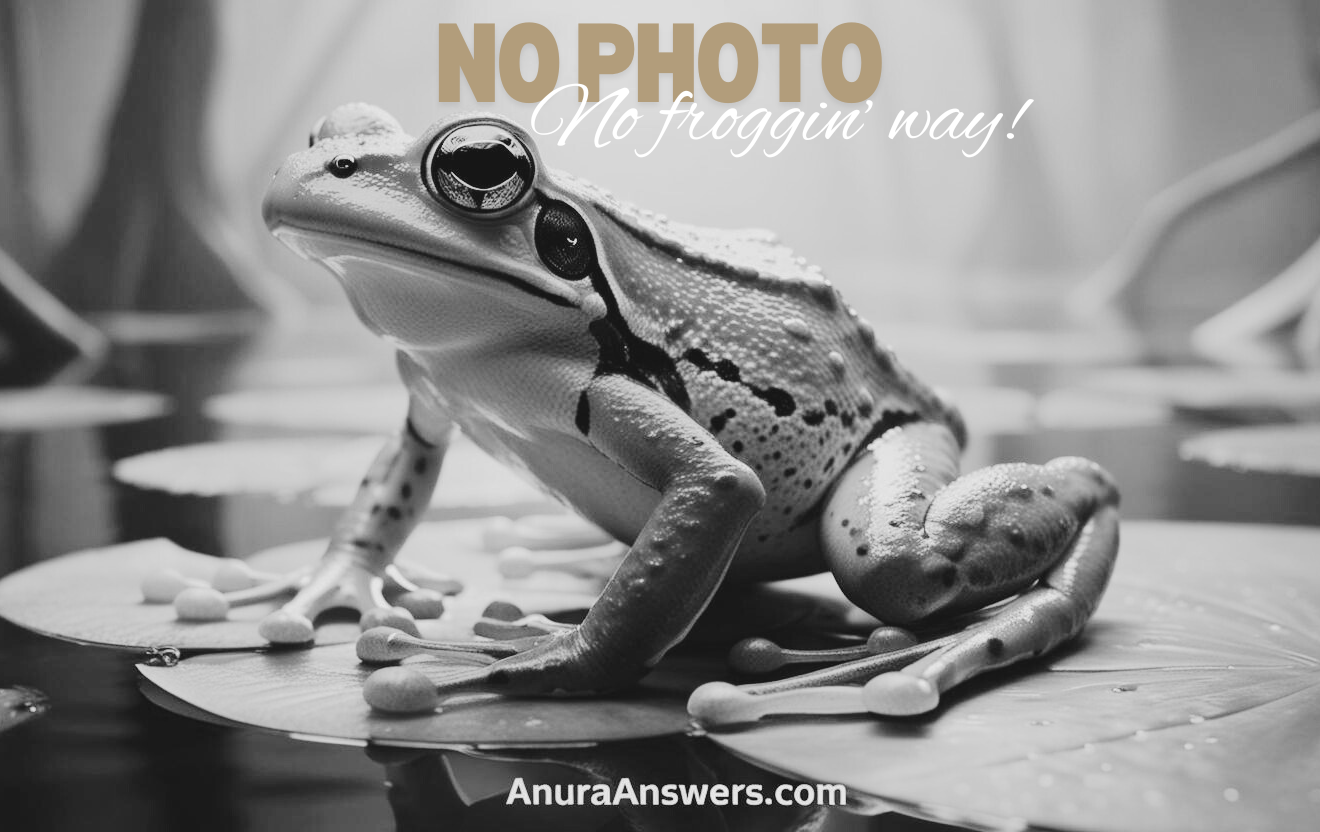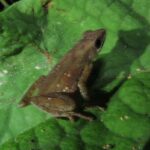- Introduction: A Hidden Jewel Amid the Forest Floor
- Taxonomy & Classification: Understanding Its Family Ties
- Natural Habitat: The Moist Enclave of Tanzania’s Montane Forests
- Physical Characteristics: Nature’s Ingenious Adaptations
- Behavior & Life Cycle: An Enchanting Performance Beneath the Leaves
- Ecological Role: Vital Guardians of Forest Health
- Threats and Conservation Status: Guarding Tanzania’s Hidden Treasure
- Cultural and Scientific Significance: Lessons from Hidden Lives
- Conclusion: Preserving a Quiet Marvel
Introduction: A Hidden Jewel Amid the Forest Floor#
Beneath the dense carpets of leaf litter deep within Tanzania’s mist-cloaked mountain forests, there hides an elusive amphibian that few have ever encountered. Quietly inhabiting its lush domain, the Rungwe Rain Frog, scientifically named Probreviceps rungwensis, remains one of nature’s best-kept secrets. Lacking bold coloration and flamboyant behaviors common among tropical frogs, this inconspicuous forest-dweller attracts attention through the charming mystery and ecological significance it embodies rather than flashy appearance or loud calls.
Discovered and described only in recent decades, Probreviceps rungwensis captivates researchers and nature lovers alike, providing valuable insights into forest ecosystem health. Surrounded by thick foliage, vibrant mosses, and hushed twilight, the Rungwe Rain Frog quietly persists, adapting ingeniously to its unique microhabitat. But beyond mere curiosity, this small frog symbolizes the delicate balance and complexity of life thriving on our planet’s richly diverse continent.
Taxonomy & Classification: Understanding Its Family Ties#
Probreviceps rungwensis belongs to the family Brevicipitidae, a fascinating group of mostly ground-dwelling frogs distributed across sub-Saharan Africa. Within this family, members are affectionately known as “rain frogs,” due to their close association with damp leaf litter and their reliance on humid microhabitats.
Placed within the genus Probreviceps, the Rungwe Rain Frog shares its lineage with several closely related species inhabiting isolated mountain ranges and rainforests, each adapted to distinct local environments. This classification highlights the significant evolutionary adaptations that have taken place in East Africa’s scattered highland communities, resulting in a diverse range of specialized amphibian species living in these “biological islands.”
Natural Habitat: The Moist Enclave of Tanzania’s Montane Forests#
The Rungwe Rain Frog resides exclusively within the forests surrounding Mount Rungwe—a dormant volcanic mountain blanketed in rich vegetation, cool mists, and abundant rainfall. Situated in the Southern Highlands of Tanzania, Mount Rungwe’s forests offer ideal conditions allowing this elusive critter to thrive discreetly among fallen leaves, logs, and moss-covered tree bases.
Eager for moisture, the species favors environments perpetually shaded, damp, and cool, shunning direct sunlight by burrowing under leaf litter and debris during daylight hours. At night, under cover of darkness, the Rungwe frogs probe their miniature domain in search of prey. The ecological stability of these montane habitats provides essential microclimates they depend on, forming intricate habitat preferences carefully attuned to seasonal moisture and temperature cycles.
As scientists traverse these misty, fern-lined paths, each step reveals a fascinating spectrum of life. The stillness of the forest masks a thriving community beneath: fungi thread out their delicate mycelia, insects quietly navigate their secret highways, and, hidden amid the nutrient-rich soil and moisture, Probreviceps rungwensis leads its private existence, abundantly thriving yet rarely observed.
Physical Characteristics: Nature’s Ingenious Adaptations#
Unlike many tropical frogs boasting vivid hues and extravagant adornments, Probreviceps rungwensis possesses modest yet functional beauty, perfectly adapted to its secretive lifestyle. Typically reaching only around 3 centimeters in length, this tiny frog is stout-bodied with short limbs, appearing somewhat spherical when viewed from above—a marvelous design aiding subterranean locomotion and burrowing beneath leaf litter.
The frog’s coloration embodies practicality rather than showiness. Its skin ranges from soft brown and grayish hues to warm earth tones, providing exceptional camouflage against the damp, fallen foliage forming its home terrain. Subtle markings—darker blotches and tiny speckles—merge seamlessly with fragmented shadows, helping it evade predators effortlessly.
Their eyes are comparatively small but remarkably effective, adapted to function optimally in the shaded shadows beneath the forest canopy. Muscular limbs and modernized toes aid in burrowing activities, allowing them to swiftly disappear within seconds amidst leaf litter or loose soil if danger threatens nearby.
Behavior & Life Cycle: An Enchanting Performance Beneath the Leaves#
Feeding Habits: Night-time Predators in Miniature#
The nocturnal behaviors of the Rungwe Rain Frog remain infrequently observed—but when documented, they reveal intriguing glimpses into life beneath our very feet. Emerging as dawn blends gently into dusk, these agile frogs begin their quiet patrols in search of small invertebrates, such as tiny insects, worms, and spiders.
Remarkably patient ambush predators, they use keen senses to detect movement, expertly calculating a precise moment to pounce on unsuspecting prey. With swift action and impressive accuracy, they secure nourishing meals that sustain their modest bodies, illustrating nature’s precise balance between hunter and hunted at the forest floor.
Reproduction: Quiet Romance Under Moonlit Shadows#
Reproductive activities of Probreviceps rungwensis occur with less fanfare compared to many frogs whose vocalizations fill evening air throughout tropical habitats. These frogs perform discreet mating rituals in secluded shelters beneath leaves. Gently calling females with understated, muffled vocalizations—a trait remarkable in its quietness compared to other amphibians—the males attract mates in hushed courtship beneath fallen debris.
Females deposit small clusters of moist eggs directly into damp leaf litter or secure hiding spots beneath decomposing wood. Unlike many frogs reproducing in standing water, Rungwe Rain Frogs exhibit direct development, bypassing aquatic tadpole stage altogether. Eggs hatch into miniature versions of adult frogs, adapted immediately to terrestrial life within their humid, leafy surroundings.
Ecological Role: Vital Guardians of Forest Health#
In their secluded forest setting, these diminutive amphibians play crucial ecological roles rarely celebrated yet significantly important. As predators of invertebrates—primarily tiny insects and arachnids—they regulate prey densities, playing considerable parts in balancing soil ecosystems. By controlling key populations, they indirectly support soil aeration, organic decomposition, and nutrient recycling—foundations of maintained forest vitality.
Additionally, as prey themselves for birds, snakes, and small mammals, Probreviceps rungwensis represents a cornerstone species within food webs, fueling greater biodiversity within these intricate ecosystems. Their sensitivity to environmental fluctuation also renders them trusted “bioindicators,” signaling ecosystem health and detecting subtle changes caused by climate shifts or human disturbance.
Threats and Conservation Status: Guarding Tanzania’s Hidden Treasure#
Currently listed by the IUCN as Vulnerable, the species faces increasing threats from habitat fragmentation, deforestation, and the encroachment of agriculture and logging in Tanzania’s montane regions. Losing forest results not merely in disappearance of trees, but in eradication of vital habitats upon which Probreviceps rungwensis and countless other organisms rely.
Moreover, projected climate changes and unpredictable rainfall patterns threaten adaptability itself—altering moisture levels critical for the frogs’ survival. Thus, safeguarding their habitats becomes paramount if we are to protect these tiny amphibians, whose unseen roles profoundly shape and sustain ecosystems larger than themselves.
Cultural and Scientific Significance: Lessons from Hidden Lives#
While not well-known culturally, Probreviceps rungwensis teaches invaluable scientific lessons about adaptation, survival, and ecological integration. Researchers recognize its potential as a model for studying climate vulnerability and ecosystem changes. Its quiet existence challenges society to value biodiversity beneath our immediate observation, nurturing broader conservation engagement and reverence for all forms of life, no matter how hidden from view.
Conclusion: Preserving a Quiet Marvel#
The remarkable but elusive Probreviceps rungwensis reminds humanity of life’s silent grandeur existing unseen beneath our feet. Protecting the rainforest habitats of species like Rungwe Rain Frogs preserves not merely isolated creatures but the intricate balance of entire ecosystems.
By raising awareness, promoting habitat conservation, and encouraging ecological stewardship, every nature enthusiast contributes meaningfully to safeguarding Earth’s quiet champions. Let it inspire your curiosity and action—help ensure continued survival of Tanzania’s hidden jewel, whose secrets tell stories richer than first imagined.







